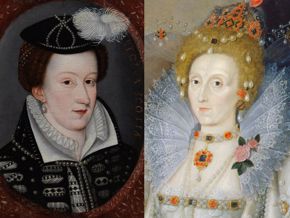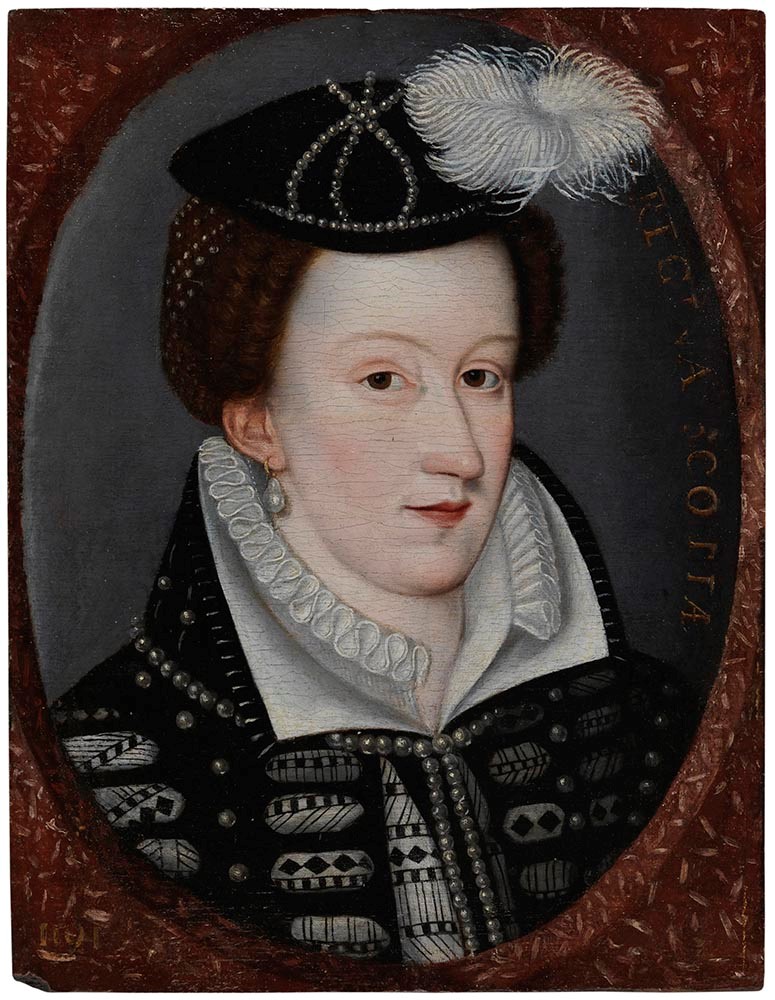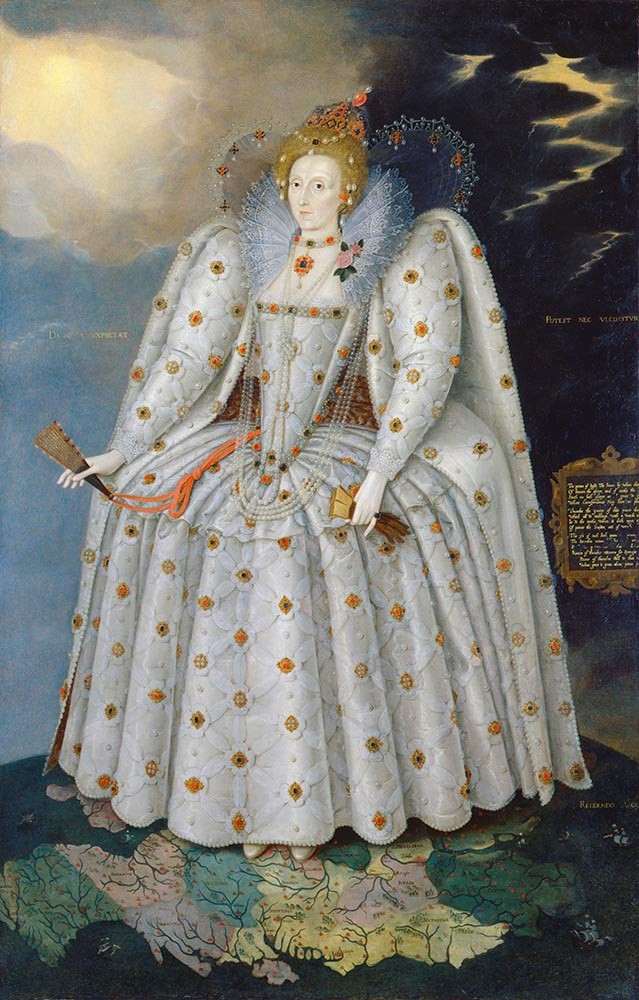Royal Rivals: Queen Elizabeth I & Mary, Queen of Scots January 4, 2019

left to right: Unknown artist, Mary, Queen of Scots, c. 1560–92, oil on oak panel, National Portrait Gallery, London | Marcus Gheeraerts the Younger, Queen Elizabeth I (“The Ditchley Portrait”), c. 1592, oil on canvas, National Portrait Gallery, London.
Installation view of Tudors to Windsors: British Royal Portraits from Holbein to Warhol, featuring Marcus Gheeraerts the Younger, Queen Elizabeth I (“The Ditchley Portrait”), c. 1592, oil on canvas, National Portrait Gallery, London.
Unknown artist, Mary, Queen of Scots, c. 1560-92, oil on panel, National Portrait Gallery, London. © National Portrait Gallery London
The story of Queen Elizabeth I and Mary, Queen of Scots, has inspired many fictional tales, including the new film Mary Queen of Scots, which explores the nature of their turbulent relationship.
Although such stories are speculation, we can certainly tell from the paintings of the rulers, on view in Tudors to Windsors: British Royal Portraits from Holbein to Warhol, that they were quite different people.
Portrait of Mary

Unknown artist, Mary, Queen of Scots, c. 1560–92, oil on oak panel, National Portrait Gallery, London.
Mary, Queen of Scots, looks out rather flirtatiously from her portrait—her character evident from the way she observes the viewer. The painting dates from the period of her marriage (1558–60) to France’s King François II, who left Mary a widow when she was just 18 years old.
Mary was a Roman Catholic and cousin of the English queen, Elizabeth I. In 1567, powerful Scottish nobles forced Mary to abdicate the throne in favor of her infant son, who became James VI of Scotland. Mary fled to England. As the great-granddaughter of Henry VII, she believed she had a stronger claim to the English throne than Elizabeth. Mary became the focus for Roman Catholic rebellion, and Elizabeth had Mary imprisoned. Declared guilty of treason in 1586, Mary was executed the following year.
Portrait of Elizabeth I

Marcus Gheeraerts the Younger, Queen Elizabeth I (“The Ditchley Portrait”), c. 1592, oil on canvas, National Portrait Gallery, London.
The only surviving child of Henry VIII, Elizabeth I inherited the throne in 1558. In contrast to her cousin Mary’s portrait, the full-length Ditchley Portrait shows Queen Elizabeth I as austere and distant—even rather forbidding. The man who commissioned this painting, Sir Henry Lee, lived in Ditchley Park in Oxfordshire, England. He had offended the queen with his marriage to someone she did not approve of, so he commissioned this work of art to reinforce his loyalty to her. He had her painted with her feet planted on his estate.
Hit “play” below to hear David Bomford, the Audrey Jones Beck Curator of European Art and chair of conservation, discuss the portraits of Elizabeth I and Mary, Queen of Scots, on view in “Tudors to Windsors.”
Visit “Tudors to Windsors: British Royal Portraits from Holbein to Warhol,” on view in the Law Building through January 27.





